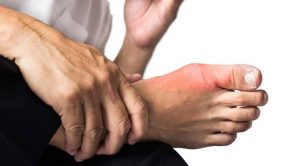 Carbon-fibre insoles for shoes, which can reduce the range of motion at the first metatarsophalangeal (MTP) joint, have been shown to be useful in reducing pain associated with osteoarthritis of the joint.
Carbon-fibre insoles for shoes, which can reduce the range of motion at the first metatarsophalangeal (MTP) joint, have been shown to be useful in reducing pain associated with osteoarthritis of the joint.
The preliminary findings from an Australian randomised controlled trial of the shoe-stiffening inserts versus a sham insert were presented at the 2018 ACR/ARHP Annual Meeting in Chicago.
Professor Hylton Menz, NHMRC Senior Research Fellow in the La Trobe Sport and Exercise Medicine Research Centre, told the limbic about 8% of people over the age of 50 years were affected by OA in the first MTP joint.
There was currently not a lot of good evidence for any particular treatment with some people trying footwear modification, taping or NSAIDs.
“So what we are doing with this particular intervention is stopping the joint from getting to that end range of motion – so it stiffens up the shoe and actually limits the amount of dorsiflexion that takes place. We are trying to avoid that end range where you get the bony compression.”
The study comprised 100 patients with an affected first MTP joint and a preliminary primary outcome of foot pain at 12 weeks using the Foot Health Status Questionnaire (FHSQ).
While FHSQ pain scores improved in both groups, there was a statistically significant difference in favour of the intervention group (p=0.018).
Patients in the intervention group were also more likely to report that their pain was at least moderately better compared to the control group (61% v 34%). The number of patients needed to be treated for benefit was four.
Professor Menz said the ongoing study would also report on pain and secondary outcomes such as general health status, use of rescue medication and co-interventions, adverse events and physical activity levels at 12 months.
“Pain is the primary outcome measure but we are also collecting information looking at the MRI so we will be able to see at the 12 months mark whether there are any changes to the severity of arthritis within the joint.”
“That will be quite a novel finding because no one has really looked to see if mechanical intervention can actually have a disease modifying effect.”
The research group has also developed, and are presenting at the meeting, a standardized atlas of MRI features of osteoarthritis in the first MTP joint.
Professor Menz said the shoe-stiffening insole was commercially available, inexpensive and durable.
“Patients just need the right kind of shoe to accommodate them. They are not trying to control any pronation or fill up the arch; all they are doing is stiffening up the shoe so we don’t get that dorsiflexion when they are walking.”